Hutong (胡同) is also called “lane” (里弄) and “alley” (巷), meaning the narrow streets leading to the inside of the residential area between the main streets in the town or the country. Hutong originated from Yuan dynasty (1271 -1368 AD), when the Mongolian in Dadu (大都, the national capital at that time) called most streets hutong (meaning the well in Mongolian language). And it said that the Mongolian people dug many wells for more water resource that time, so it got the name of Hutong.
Beijing Hutong is both the living place of Beijing ordinary people and the pulse of this city, and although all hutongs look the same, everyone has its unique characteristic. People who go to the modern Beijing wound first long for going to see the more than 6,000 deep and serene narrow hutongs and fair quadrangle dwellings rather than those super-high rises or the wide broadways. It is no wonder that Beijing ancient capital culture is regarded as “culture of Hutong” or “culture of quadrangle dwellings”.
Most Beijing Hutongs are oriented south and north as well as east and west. Those south & north oriented ones are wide relatively and also called street for they mainly serviced the carriages before; the east & north directed are narrower for people walking. These hutongs are all near the noisy places, however, the sounds of people and vehicles are totally cut off away, leaving only serenity and peace here inside.
Beijing Hutong is not only a pass in this city, but also the vital stage showing the historical and cultural evolution of the ancient capital. Every tile and brick has a long history of at least over hundreds of years. For the first blink, you would think all these grey walls and tiles are the same look, but when wandering here closely in several hutongs and chatting with the local residents for a while, you could find all hutongs have their own stories and legendary experiences. Every hutong seems like a museum of folk custom with rich culture and features of era.
Beijing people have special emotion for hutong because numerous life traces are left here. And it is really meaningful to learn the daily life, delight, and neighborly relation through these diverse hutongs.
The names are another interesting feature of Beijing Hutong besides its culture and appearance. Since Beijing people feel at ease when most aspects are close to their life, all hutongs have their characteristic folksy names, from rivers, lakes, mountains, moons, surnames, temples, commodities, factories, flowers, fishes, clouds, stars, water, wells, harbors, wind, fire, trees, chickens, meat, etc. like Yuer Hutong (雨儿胡同, Rain Hutong), Haibin Hutong (海滨胡同, Harbor Hutong), Jinger Hutong (井儿胡同, Hutong of Well), and so on.
Moreover, different from other cities where people are inclined to name a place after a city name, like Nanjing Road, Guangzhou Road, place names in Beijing are more of living, like those hutongs name related to the rice, oil, salt, vinegar, etc. and those named about gold, silver, copper, iron and tin. All interesting hutong names show the purity and honesty of Beijing people.
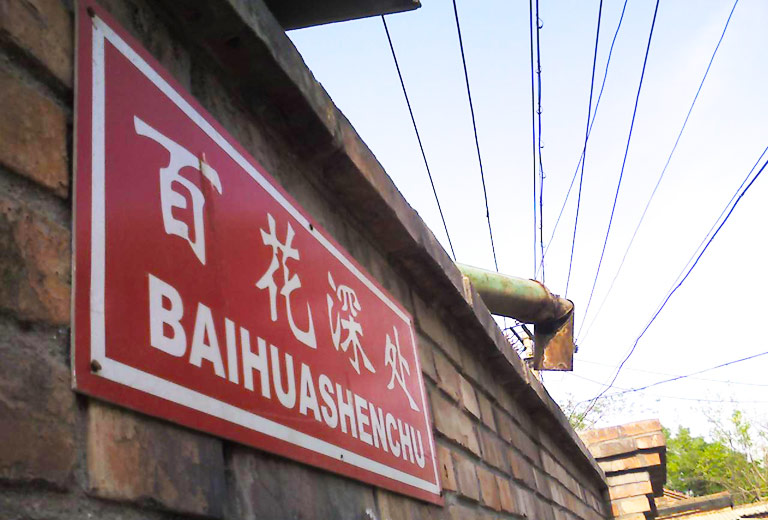 Interesting Hutong Name Meaning At the Depth of Flowers
Interesting Hutong Name Meaning At the Depth of Flowers
Among all the thousands of hutongs in Beijing, some distinctive ones are worth having a general knowledge and even going to have a look, like the Shichahai Hutongs, Bell & Drum Towers Hutongs, South Gong & Drum Alley, Pipe Slanting Street, etc.
Shichahai (什刹海) best keeps the most old Beijing buildings, so you can visit about 15 hutongs with particular features, imperial mansions and former homes of renowned people in this area, like the Prince Gong’s Mansion (恭亲王府), which is the most-preserved palace of a prince of Qing dynasty in Beijing and a typical garden palace of a prince. What’s more, Shichahai is a famous tourism sightseeing area in Beijing. Fascinating natural scenery with lush plants and crystal clear lakes are placed here, which enables Shichahai to get the honor as the “Western Watery Place in China”.
Address: Xicheng District, Beijing.
The Bell Tower (钟楼) and the Drum Tower (鼓楼) are the must-visit places for people first visiting Beijing. Hutongs in this area extend in all directions with famous Beijing time-honored brands and antique culture surrounding. It is really like a magic experience to roam in these deep and quiet hutongs, admiring the old pines and overhanging eaves of the hundreds-year-old dwellings, and hearing the ear-pleasing chime and drumbeat at a fixed time.
Address: Zhonglouwan, Dongcheng District, Beijing.
Nanluoguxiang (南锣鼓巷), or called South Gong & Drum Alley, 8m wide and 787m long, is one of the oldest blocks in Beijing built more than 740 years ago. It is also the traditional residential area of checkerboard type with the most-preserved texture of hutong and courtyard in the Yuan dynasty (A.D. 1271 - 1368), largest scale, highest level and most resources in China and richest old Beijing flavor. Since it was a rich land hundreds of years ago, countless imperial mansions and grand courtyards are left along this alley.>>Read More about Nanluoguxiang
Address: Dongcheng District, Beijing.
Yandaixie Street, or Yandai Byway (烟袋斜街), is the oldest slanting street in Beijing with a length of 232m. It got the name because a lot of stores sell long-stemmed Chinese pipes and hookahs, and other smoking sets are prevailing along this street from the late Qing dynasty to 1930s. Furthermore, since Yandaixie Street is a top famous cultural street in northern Beijing with abundant simple old Bejing buildings and full atmosphere of cultural and artistic breath, tourists can see the remains of many cultural celebrities and find antiques, painting and calligraphic works, and ancient constructions, etc. in this great place.>>Read More about Yandaixie Street
Address: Xicheng District, Beijing; in front of the Drum Tower.
Apart from the above mentioned featured hutongs, some others of THE MOST are also worth spending some time. The longest is Dongxijiaominxiang (东西交民巷) for 6.5 km long; Lingjing Hutong (灵境胡同) has the widest cover of 32.18 m; Qianshi Hutong (钱市胡同) filled with old Chinese money shops before is the narrowest one of only 0.44 m at some section, and people must walk sideway through this pass if there are 2 walking towards; Jiuwan Hutong (九弯胡同) winding for 19 times is the hutong having most corners; Zhuanta Hutong (砖塔胡同) since Yuan dynasty is the oldest one in Beijing and is regarded as the “Root of Beijing Hutongs”.
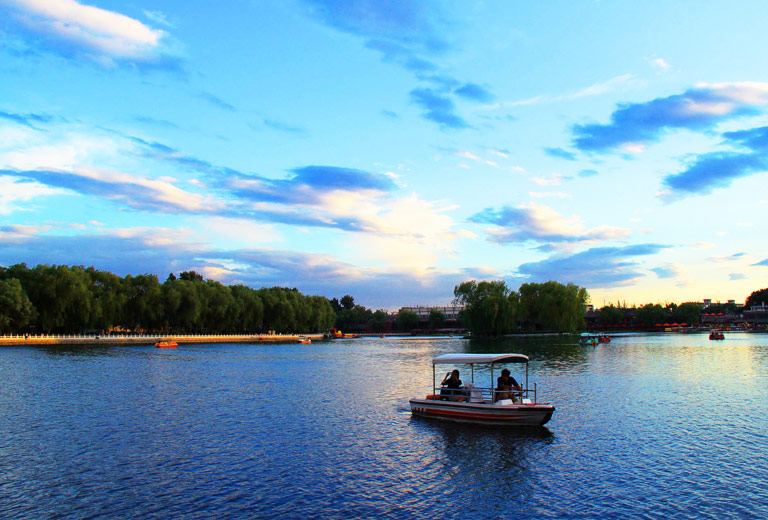 Fascinating Scenery of Shichahai
Fascinating Scenery of Shichahai
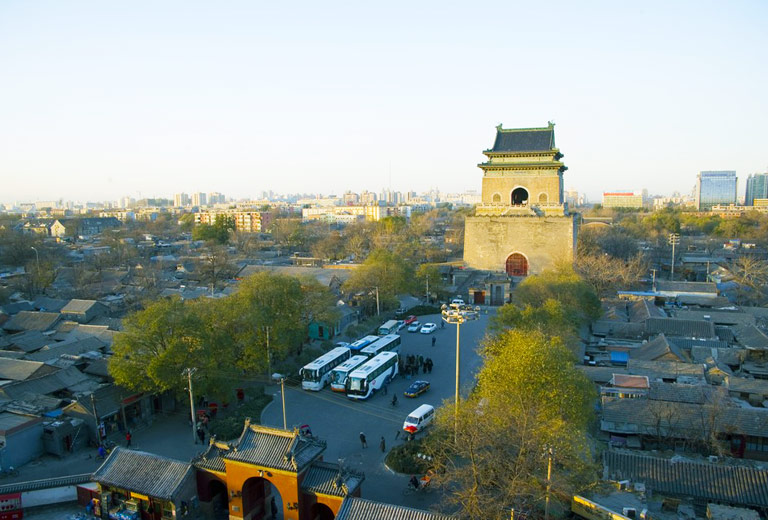 Beijing Bell Tower
Beijing Bell Tower
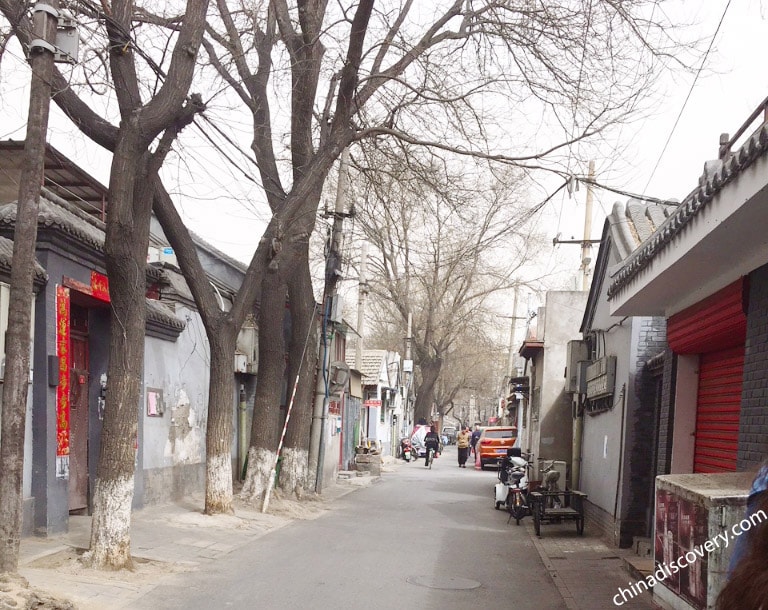 South Gong & Drum Alley
South Gong & Drum Alley
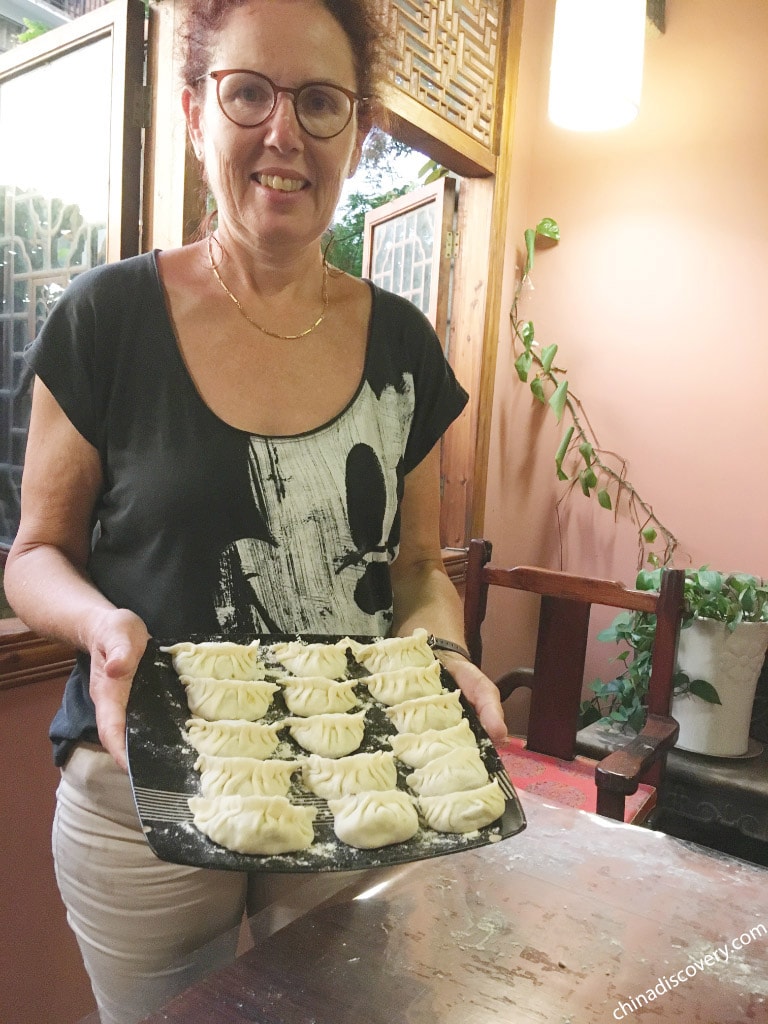 Prosperous Scene of Pipe Slanting Street
Prosperous Scene of Pipe Slanting Street
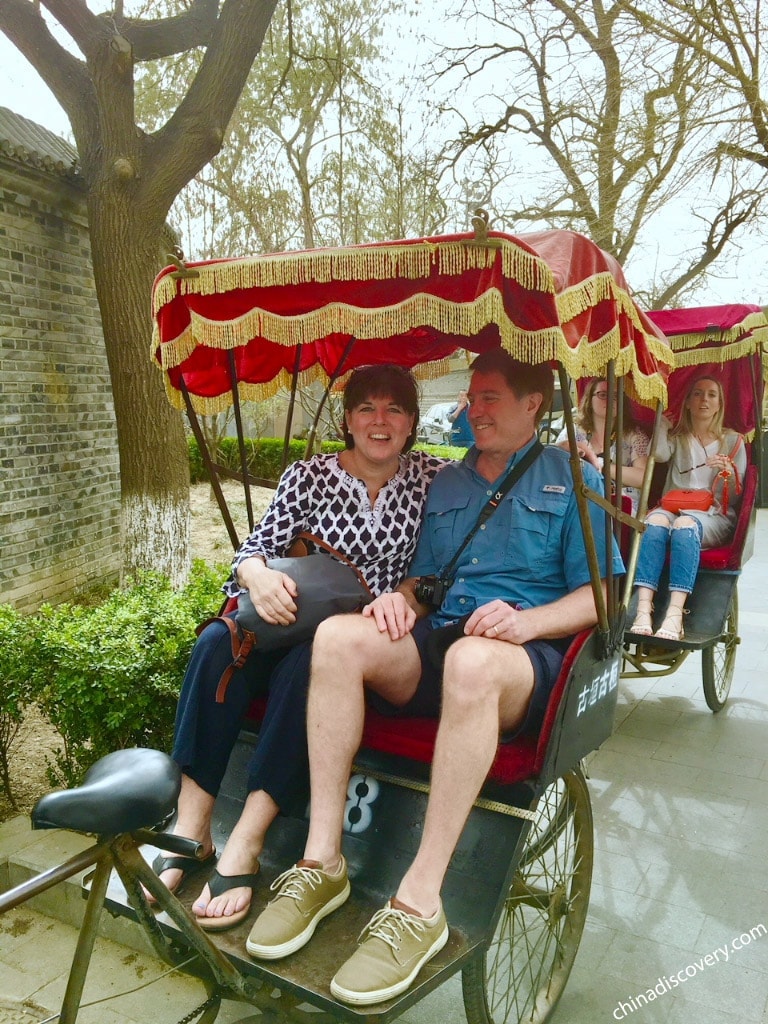 The Narrowest Hutong - Qianshi Hutong
The Narrowest Hutong - Qianshi Hutong
You can choose many different ways to get close to these characteristic Beijing Hutongs to appreciate the special ancient buildings and to experience the local old life and rich Beijing culture, such as enjoying the special buildings on a rickshaw; learning to make dumplings in a local residence; biking through the deep hutongs, etc.
Almost all friends from other countries prefer to take a rickshaw to visit the old hutongs. They can both appreciate the ancient alleys with grey brick walls and particular northern Chinese quadrangle courtyards, and listen to the related history and stories along the way since some wheelers can speak some English. Moreover, you can see the remained palace of the prince to admire the excellence in the gardens and decorations and to experience the past life and prosperity of Chinese imperial household.
You can choose to take the chance of making dumplings in a local residence in a hutong, which is an uncommon opportunity to know every step of making these delicious northern China dumplings and understand more about the rich culture of family reunion and the sincere hope for bright future life in China. Also, you can feel it really interesting, warm and sweet to enjoy a meal with the hospitable Beijing people.
Renting a bike to roam along the hutongs is of full fun as well. You can enjoy the historical feature in the deep and serene hutongs, watch the local Beijing people’s daily life, and appreciate and charming sightseeing near these old buildings. You will understand why foreign people say that Beijing Hutongs are so beautiful and charming!
Besides those featured activities, you can also choose other interesting things to do to enjoy the real life and local culture of old Beijing, such as learning the Chinese paper cutting of various patterns, trying the calligraphy to know the ancient writing of Chinese, making Chinese Knots, Yangko dancing, etc.
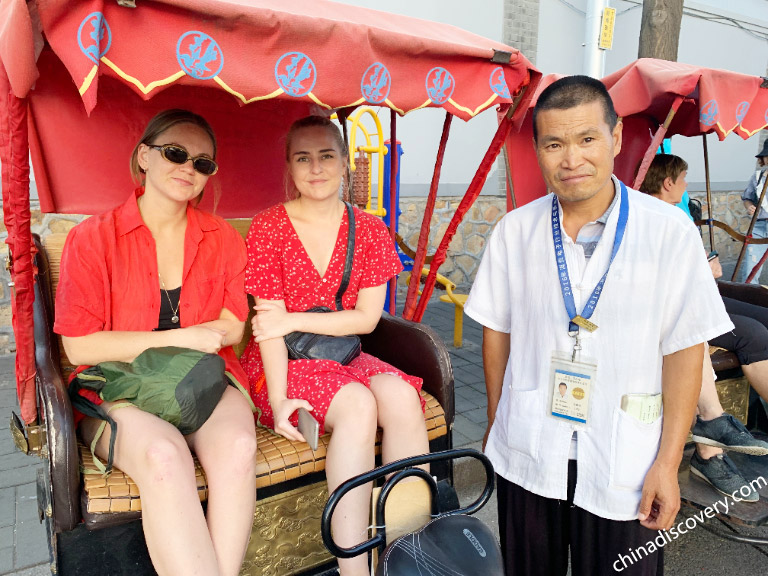 Take A Rickshaw to Visit Hutongs
Take A Rickshaw to Visit Hutongs
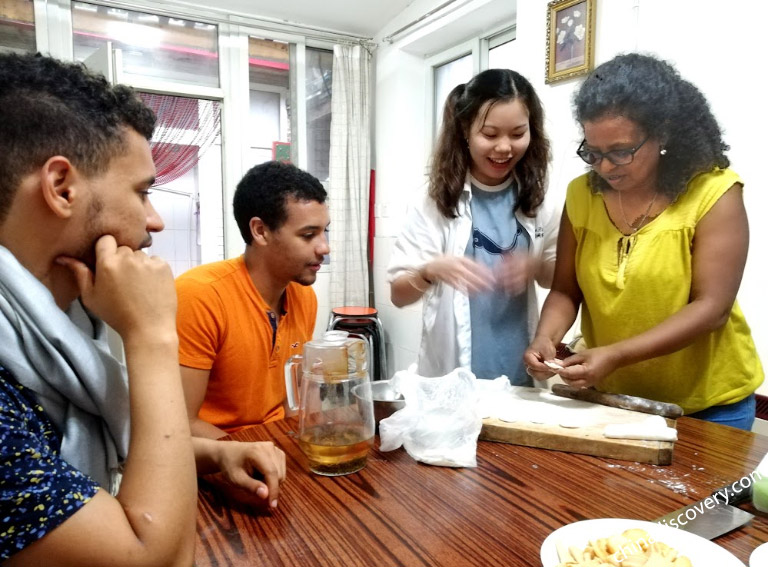 Making Dumplings
Making Dumplings
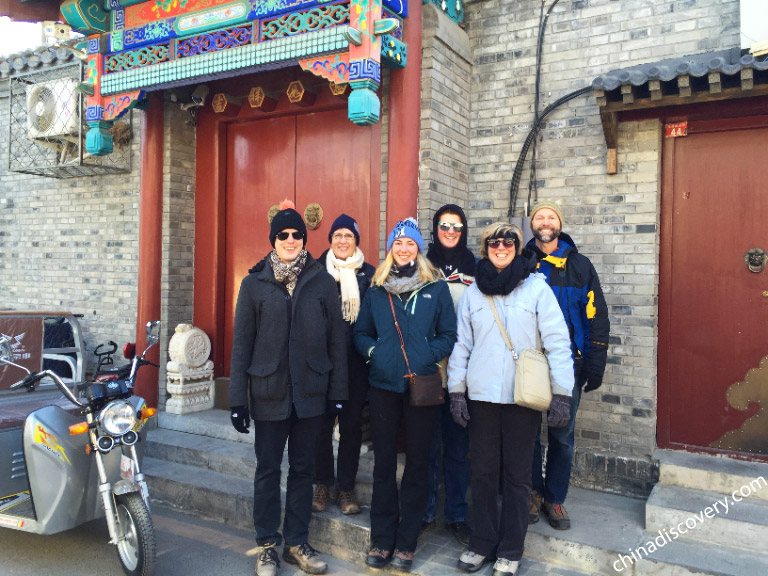 Having a Great Time in a Beijing Hutong
Having a Great Time in a Beijing Hutong
Since the number of Beijing Hutongs is so large, we recommended you to visit some representative featured ones to experience its rich culture.
Visit the Bell & Drum Towers Hutongs to hear the chime and drumbeat and enjoy the old different hutongs along the way, and see the old former houses of celebrities, like the Prince Gong’s Mansion. Then wander along other interesting hutongs to Shichahai area and appreciate the beautiful landscape. (For about 2-4 hours)
Visit the South Gong & Drum Alley to capture images of the best-preserved residential area of checkerboard type. See the fascinating natural scenery in Shichahai and take pictures of the well preserved former houses of famous people. Then, go to the Pipe Slanting Street to enjoy the rich culture and artistic breath of simplicity. Next, go to feel the antique flavor of the old boutiques and hear the crispy sound of the ancient bell and drum in Bell & Drum Tower Hutongs. (For a half to one day)
>> 5 Days Beijing Essence Tour with Real Hutong Life Experience
>> 6 Days Leisure Beijing Photography Tour
1. There are some places for renting bicycles near Shichahai and other sites, and if you want to bike along the old Hutong, renting one there is very convenient and great to savor the culture and constructions in the old alleys.
2. Some narrow Beijing hutongs may not have lights at night, so it is not recommended to visit these dark hutongs during night.
To explore the best highlights of Beijing, including Tiananmen Square, Forbidden City, Great Wall, Temple of Heaven, Summer Palace, Hutongs, you only need 2 or 3 full days, which is available for to 72 Hours Visa-free for Transit in Beijing. If you have more days, you can go for an in-depth Great Wall hiking or photography, and explore more hidden attractions in the city.
>> 4 Days Classic Beijing Tour Package
As the most popular transportation hub in China, you can easily travel from Beijing to any other hot travel destinations in China by flight or train, such as Xian, Shanghai, Yangtze River, Guilin, Chengdu, Tibet and other popular destinations in China by flight or train.. China Discovery has designed many great China tour packages from Beijing for you. Please make your choice from our collections or let us customize one for you.
Top 3 Beijing tours chosen by most customers to explore Beijing in the best way. Check the detailed itinerary, or tailor your own trip now with us.
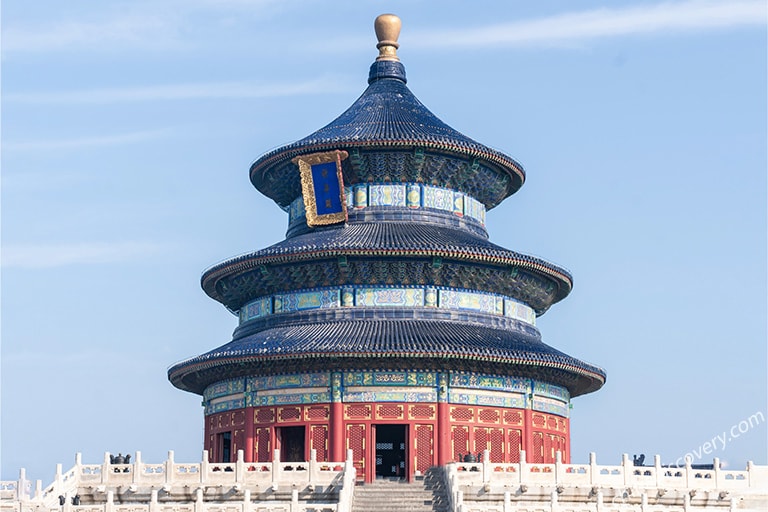
Beijing / Great Wall
Start planning your tailor-made holiday to China by contacting one of our specialists. Once inquired, you’ll get a response within 0.5~23.5 hours.
Customize a Trip